The Fashion Week Report
Fashion Week is more than spectacle — it’s where ideas, craftsmanship, and culture converge to shape the future of style. At Currant, we look at Fashion Week not just to see what designers are showing, but what they’re saying: about identity, time, technology, and change. The Fashion Week Report, written by Editor-in-Chief Igrien, offers sharp, considered coverage of every season and city — from Paris to Milan, New York to London. With an eye for both aesthetics and ideas, it’s fashion seen through a cultural lens: for women of style and substance who want to see beyond the runway.
On this page:
Paris Fashion Week 2025: Womenswear SS26
Paris Fashion Week 2025:
Womenswear SS26
Highlighting:
Chanel
Hermès
Balenciaga
Dior (we covered this in The Fashion Brief)
Bottega
Chanel:
A New Air
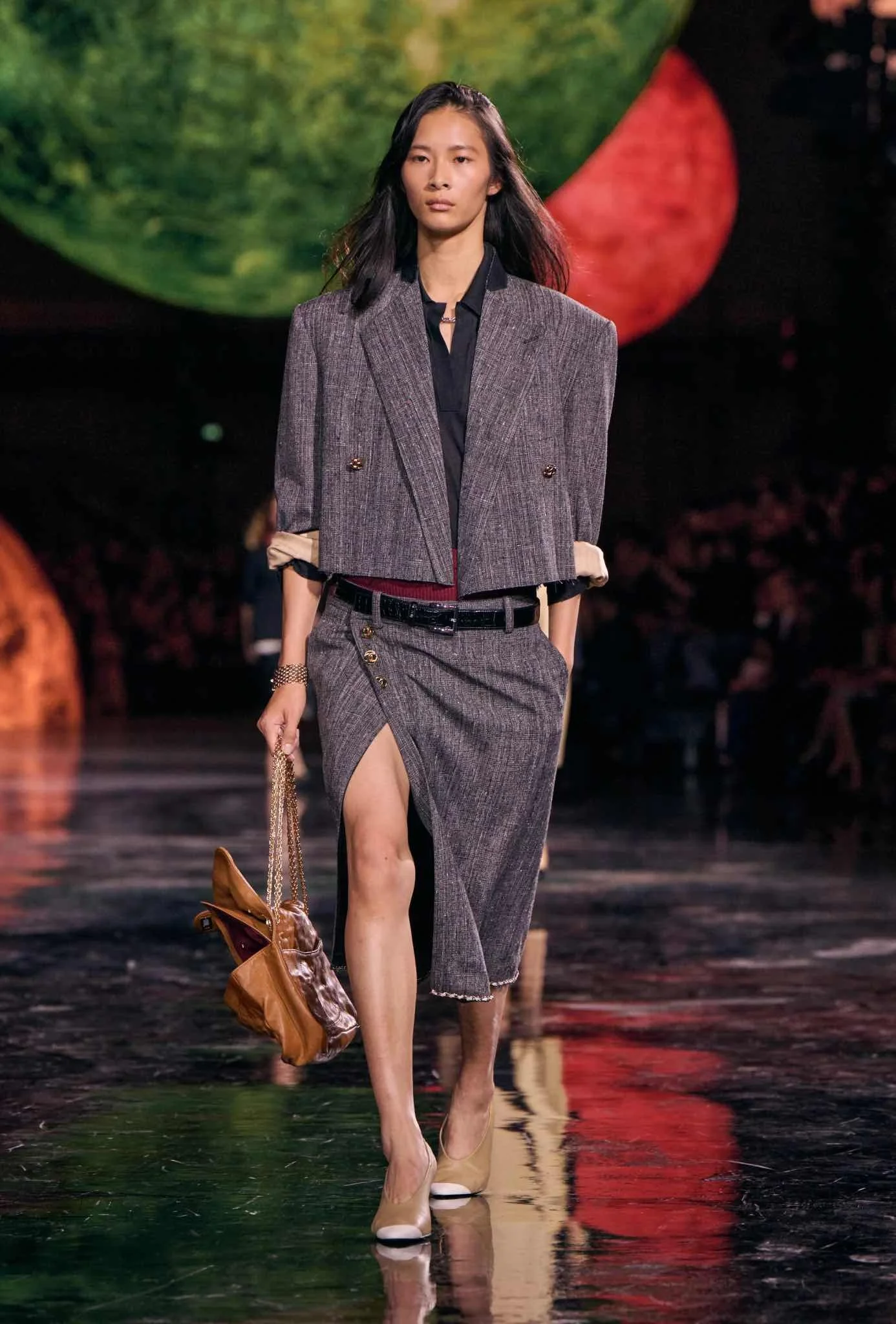
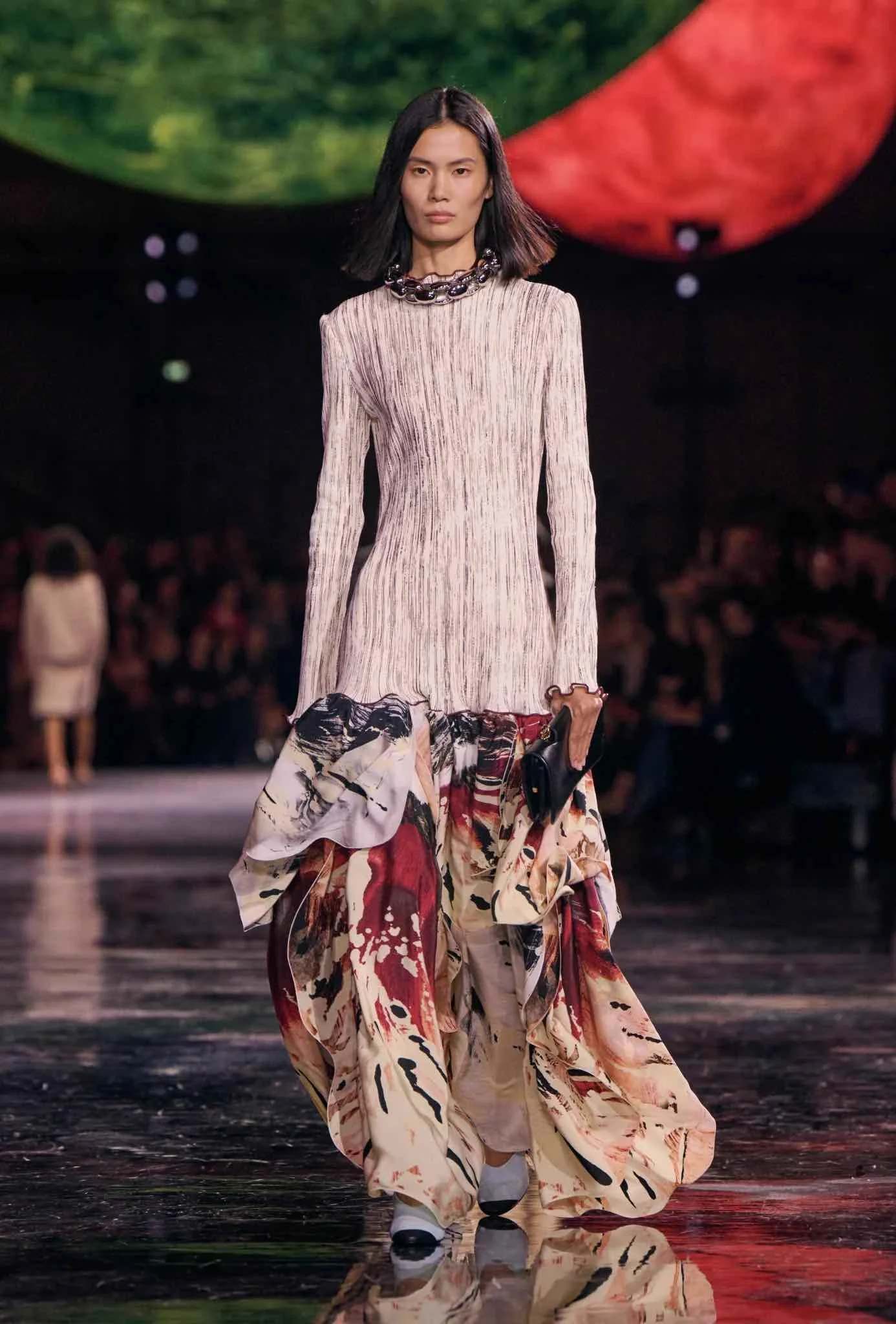

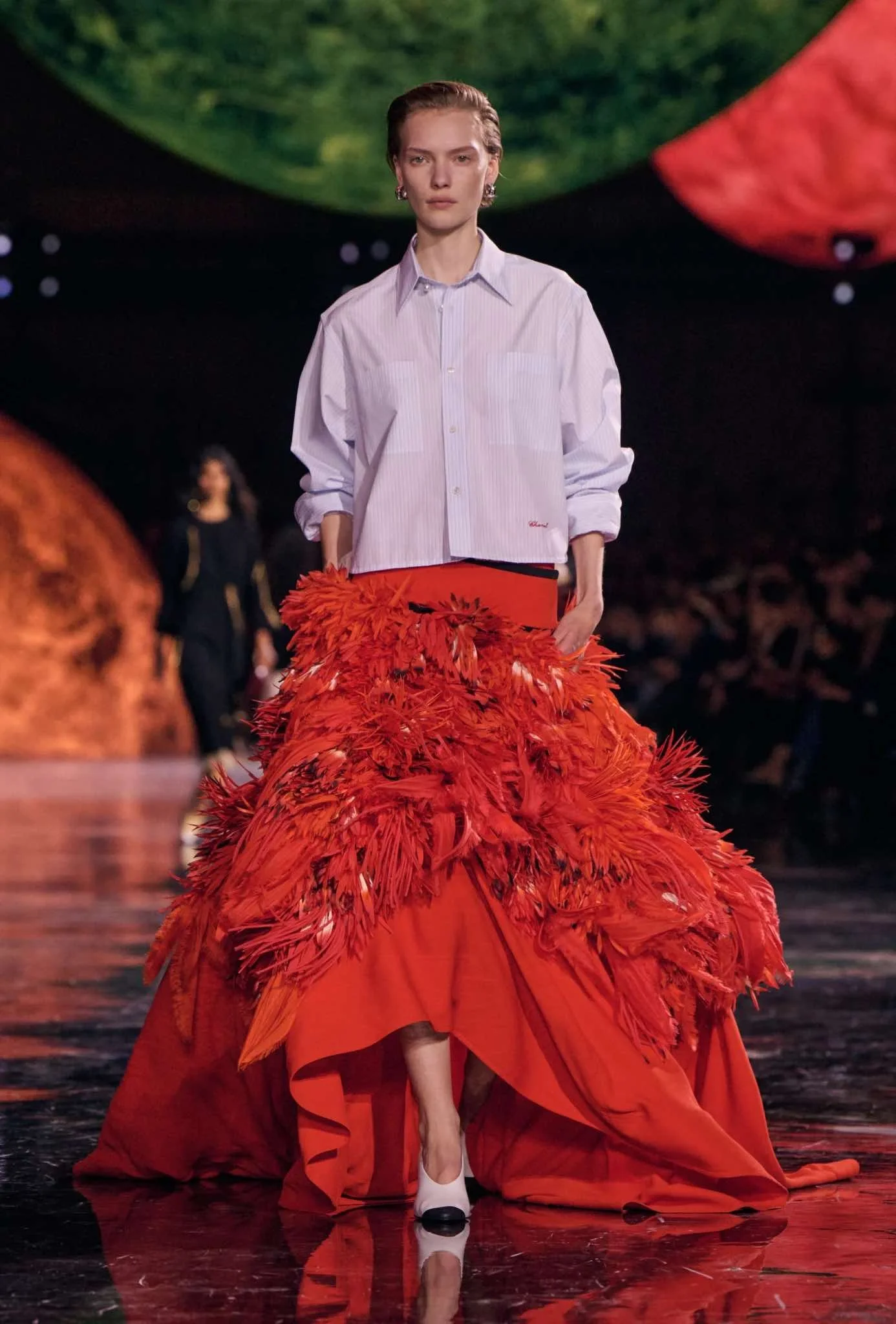

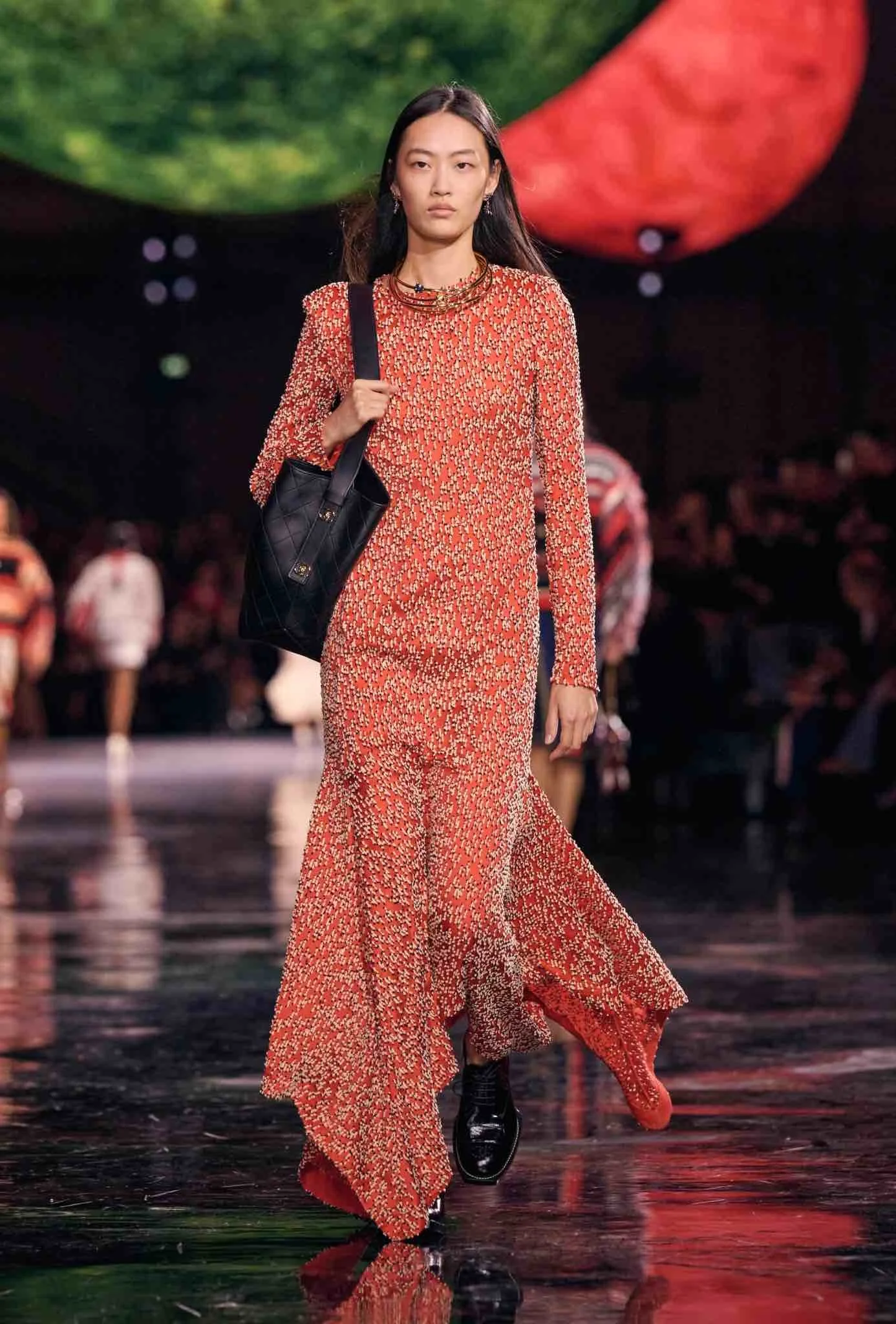
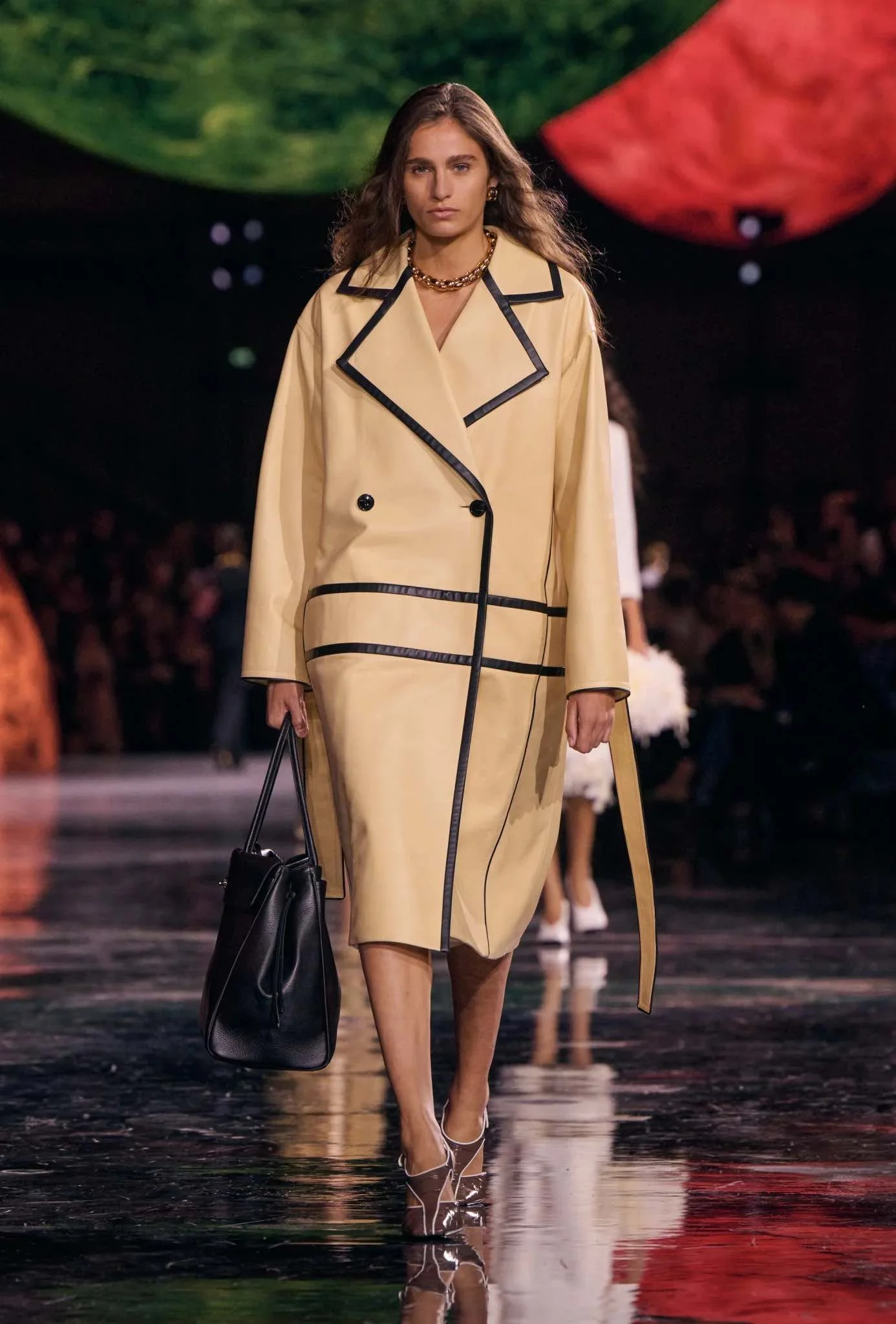

There was a lightness in the air at Chanel last night — not just in the clothes, but in the mood. Matthieu Blazy’s debut was less about rewriting Chanel and more about breathing into it, giving motion to a house that has felt, in recent years, caught between its myth and its memory. The show — staged beneath a vast cosmic ceiling of floating planets — felt like a release. A letting go of the weight of expectation.
Blazy approached Chanel’s codes not as commandments but as material — tweed, camellias, pearls, all still present, but handled differently. The waistlines dropped, twin sets elongated, edges frayed. The silhouettes were softer, airier, less sculpted and more lived-in. If Karl gave Chanel its exuberant polish and Virginie its delicacy, Blazy brings something rarer: ease. His Chanel woman moves, not poses.
It’s easy to imagine the traditionalists frowning — this isn’t Chanel, they might say. There was less symmetry, less control, fewer bows. But there was also something undeniably modern in the looseness of it all. Blazy’s genius lies in his ability to distill heritage without repeating it. He knows how to find structure in fluidity, and emotion in fabric. And perhaps that’s what the house needs right now: not another act of preservation, but of evolution.
There’s a particular moment in every collection when you feel the designer’s hand most clearly. At Chanel, it came through in the movement — the sway of a dropped-waist dress, the soft gleam of metallic bags catching light like satellites. These weren’t clothes demanding attention. They invited it.
Some might miss the severity, the crisp discipline that defined Chanel’s past eras. But fashion’s rhythm shifts with time, and what Blazy offered was not a break, but a breath. After years of holding its form, Chanel exhaled.
And maybe that’s enough for now — to remember that elegance doesn’t always need sharp edges. Sometimes, it’s found in the blur. In motion. In the way something — or someone — finally feels alive again.
The Setting
Presented under a vast cosmic canopy at the Grand Palais Éphémère, the show space shimmered with suspended planets and mirrored floors. It was theatrical, yes, but also symbolic — a universe expanding, a house reorbiting its own center.
The Silhouettes
Blazy revisited Chanel’s signatures through movement. Dropped waists, elongated twin sets, frayed hems, and fluid tailoring replaced the stricter, more sculpted silhouettes of recent seasons. Everything felt loosened — the kind of refinement that comes not from control, but from confidence.
The Materials
Tweed reappeared in lighter, less rigid weaves. Lace, chiffon, and metallic-threaded cotton caught light without stiffness. Even the embellishments — camellias, pearls, embroidery — seemed to breathe, placed sparingly and intentionally.
The Palette
Classic Chanel tones — ivory, black, navy — mingled with unexpected softness: dusty rose, pale gold, muted sky. It was a palette that felt like memory fading into dream, modern without noise.
Notes
The Accessories
Metallic bags shaped like celestial orbs, feathered skirts, and sculptural jewelry punctuated the collection. These details grounded the lightness, proof that ornamentation can enhance without overwhelming.
The Philosophy
This was not about reinvention but reanimation. Blazy treated Chanel’s history as a living organism, something that could evolve without losing its essence. In his hands, the codes are less rules than rhythms.
The Shift
If Virginie Viard’s Chanel was about continuity, Blazy’s is about renewal. A recalibration, not rebellion. He didn’t strip the brand of its heritage — he gave it air.
The Takeaway
In a season full of spectacle, Chanel’s greatest statement was restraint. Blazy reminded us that modernity isn’t always about rupture. Sometimes, it’s about remembering how to move again — gracefully, deliberately, and with light still in the seams.
Details
Published
7 October 2025
Visuals
Courtesy of Chanel
Hermès:
The Art of Restraint in Motion
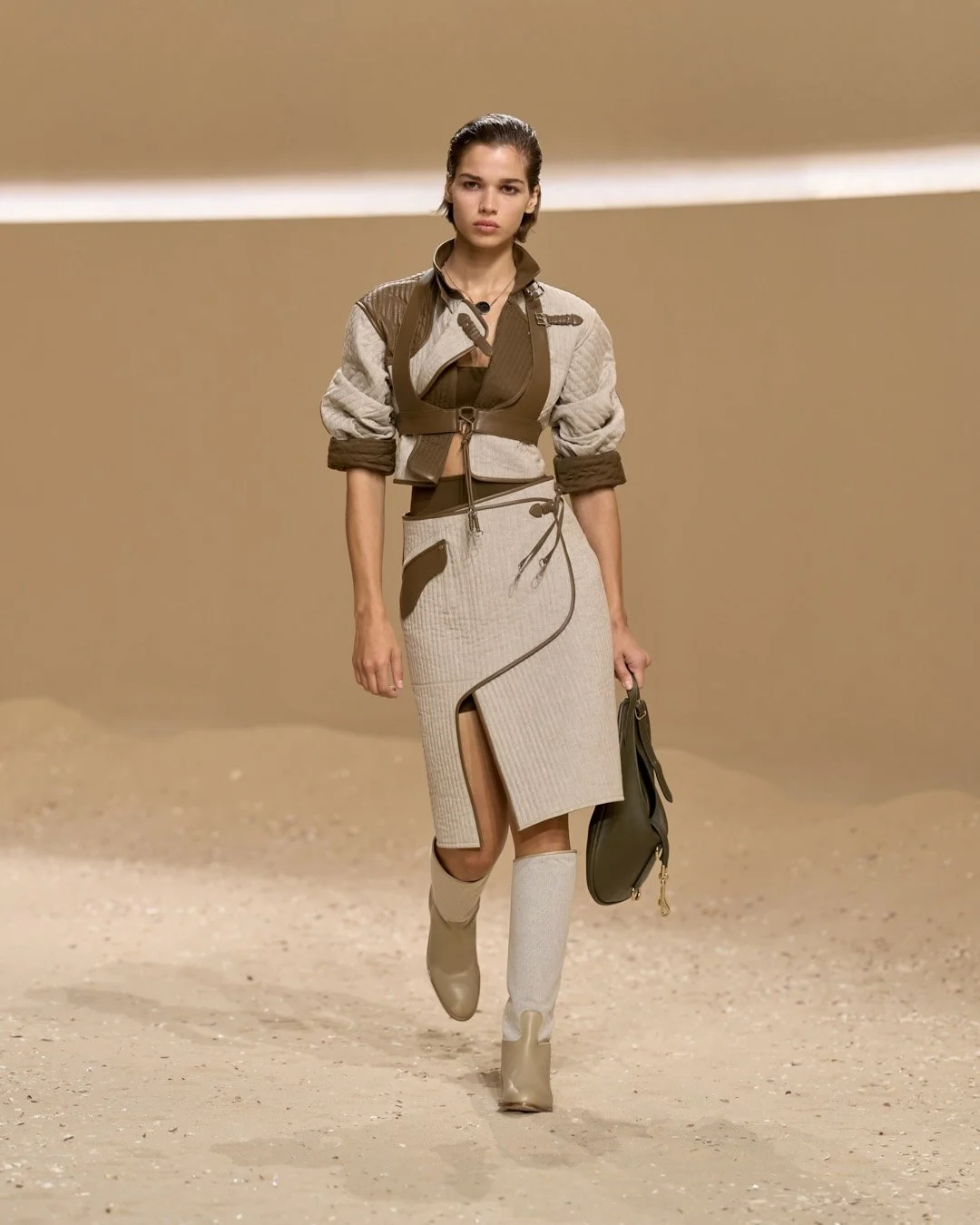
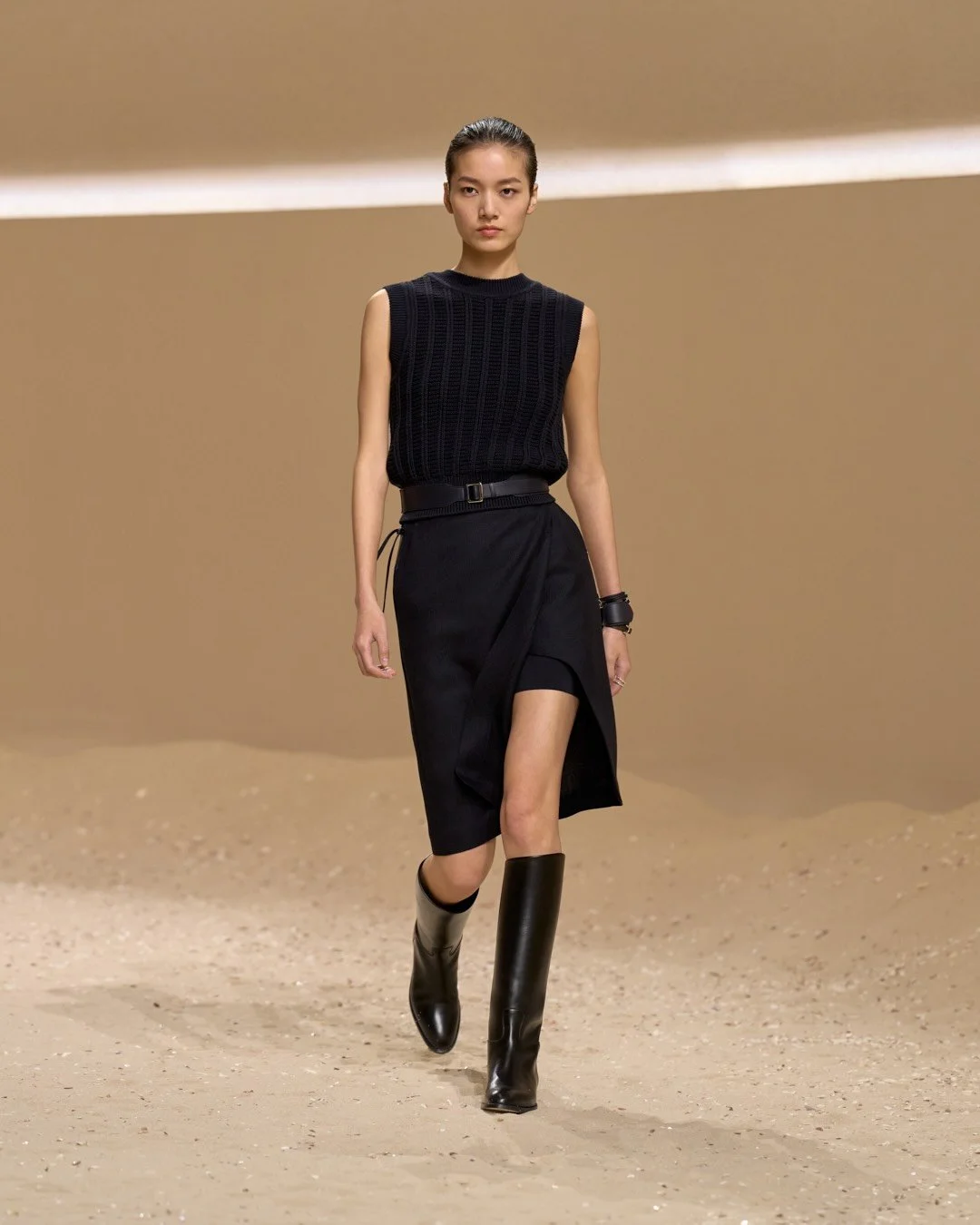
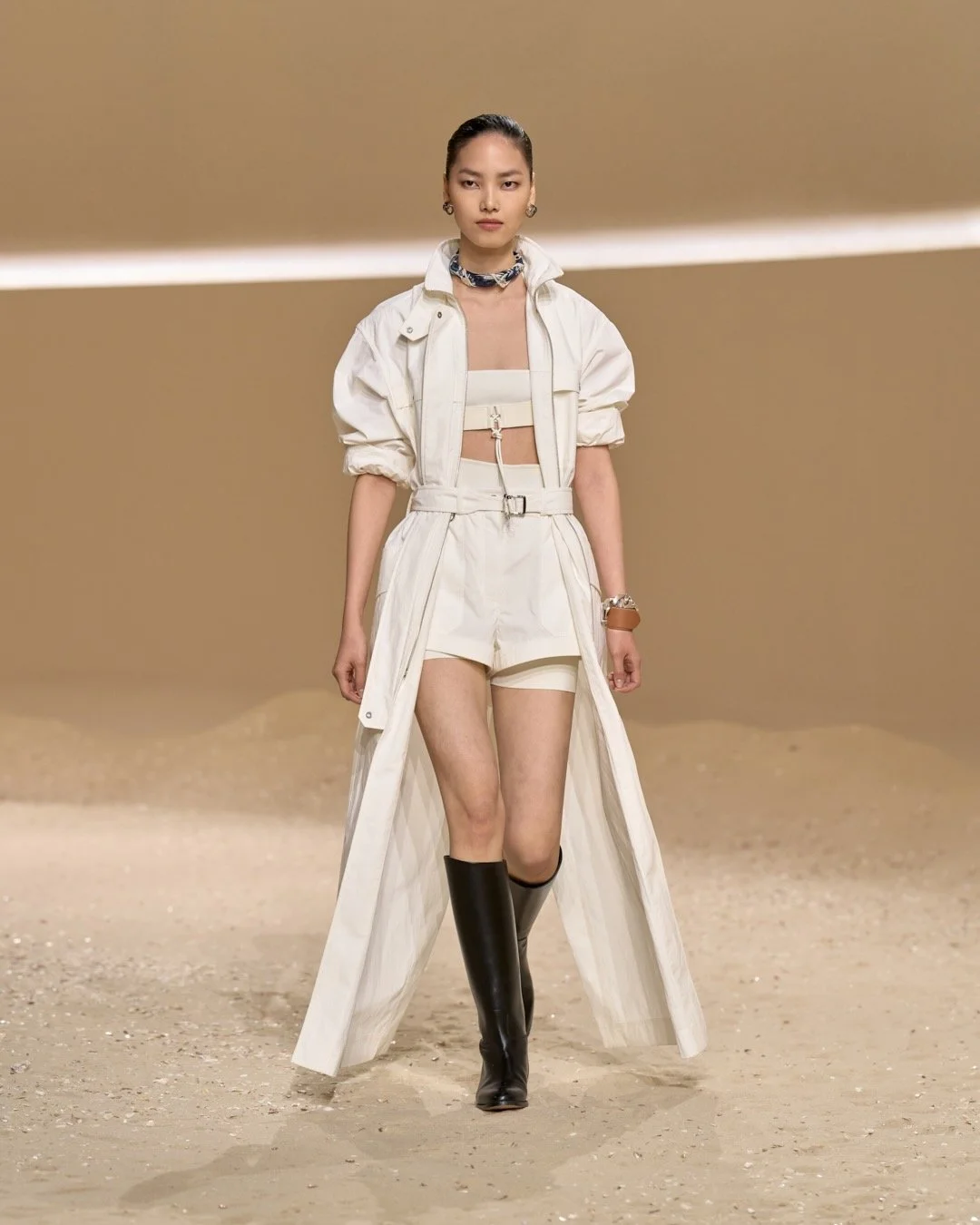
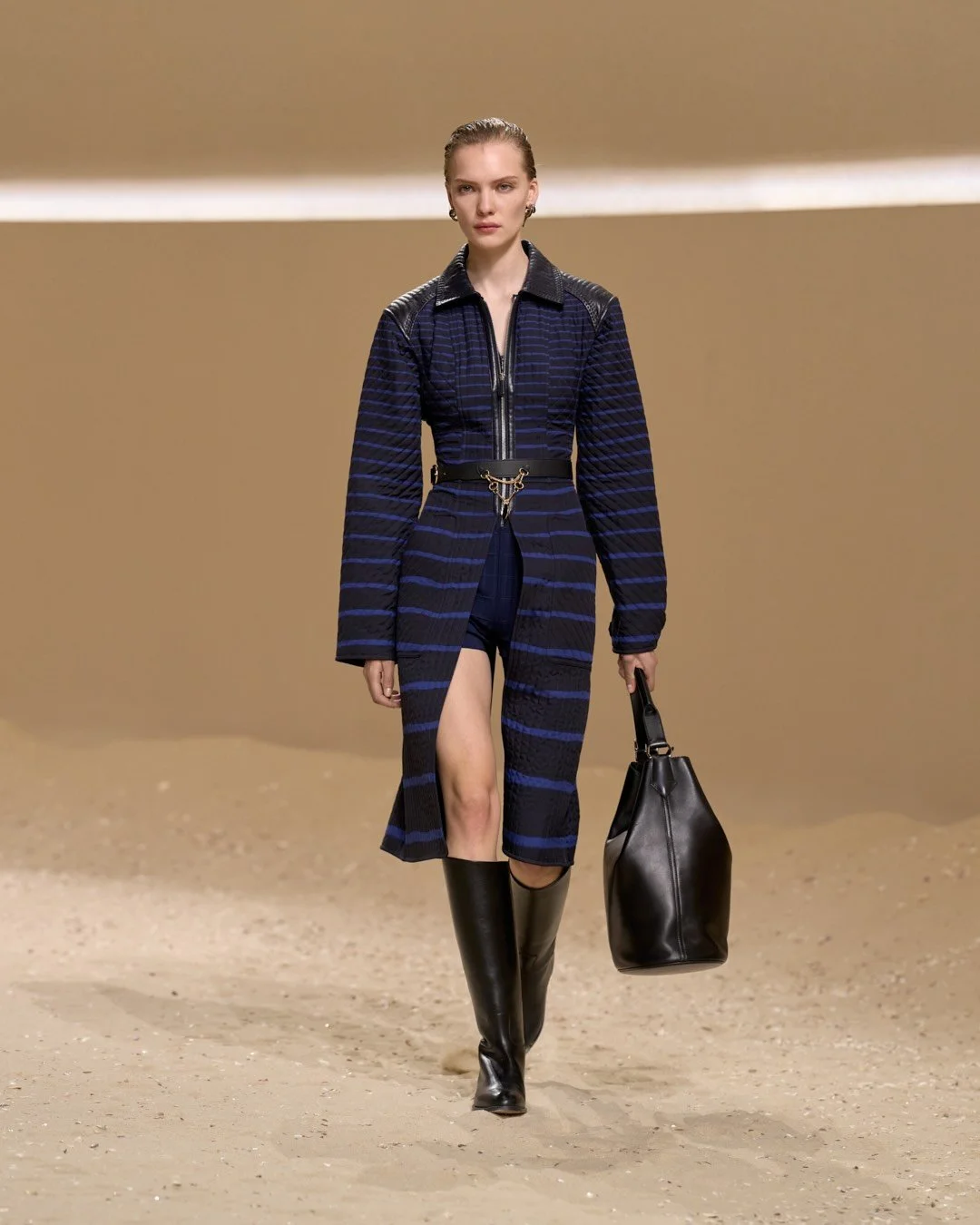
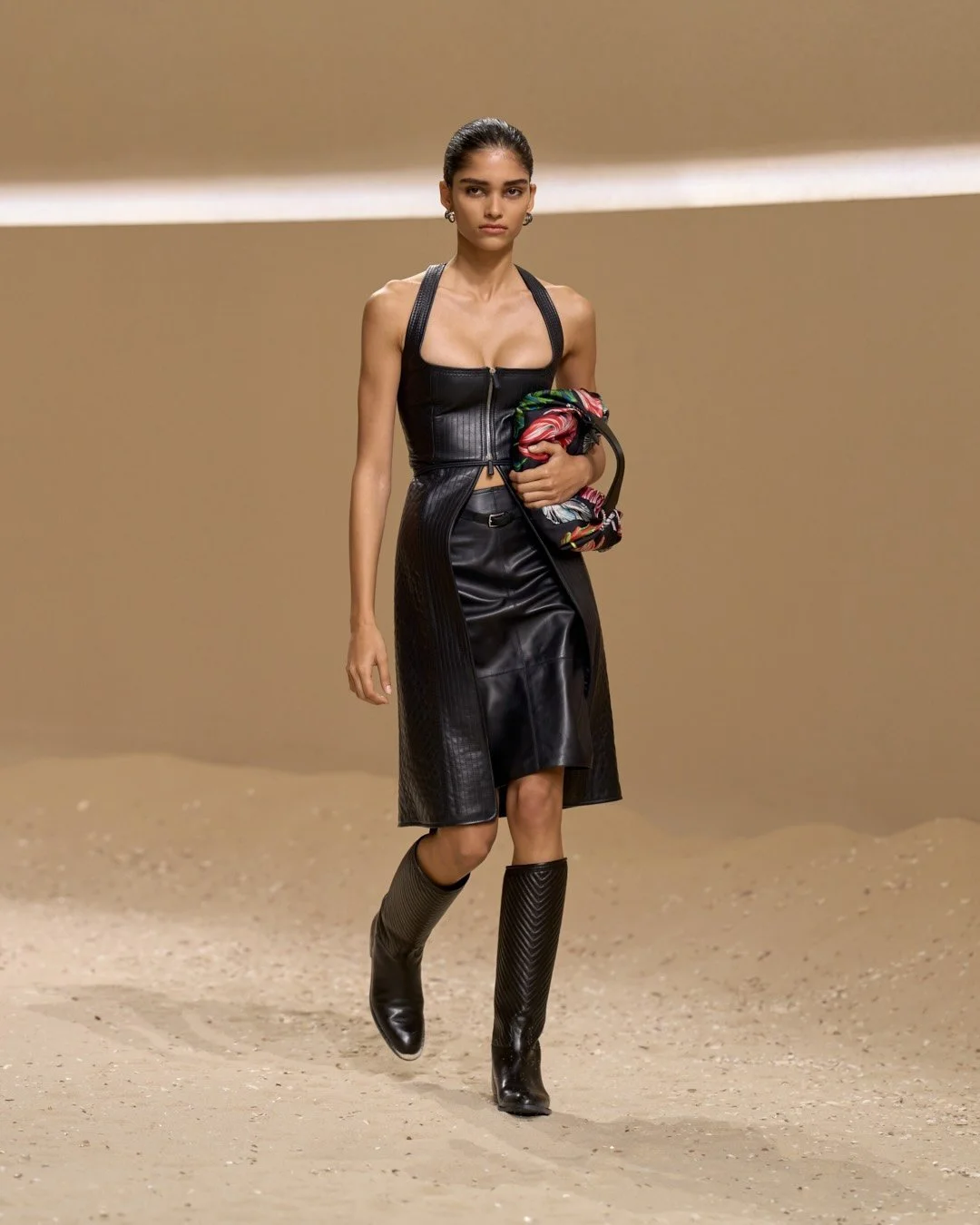
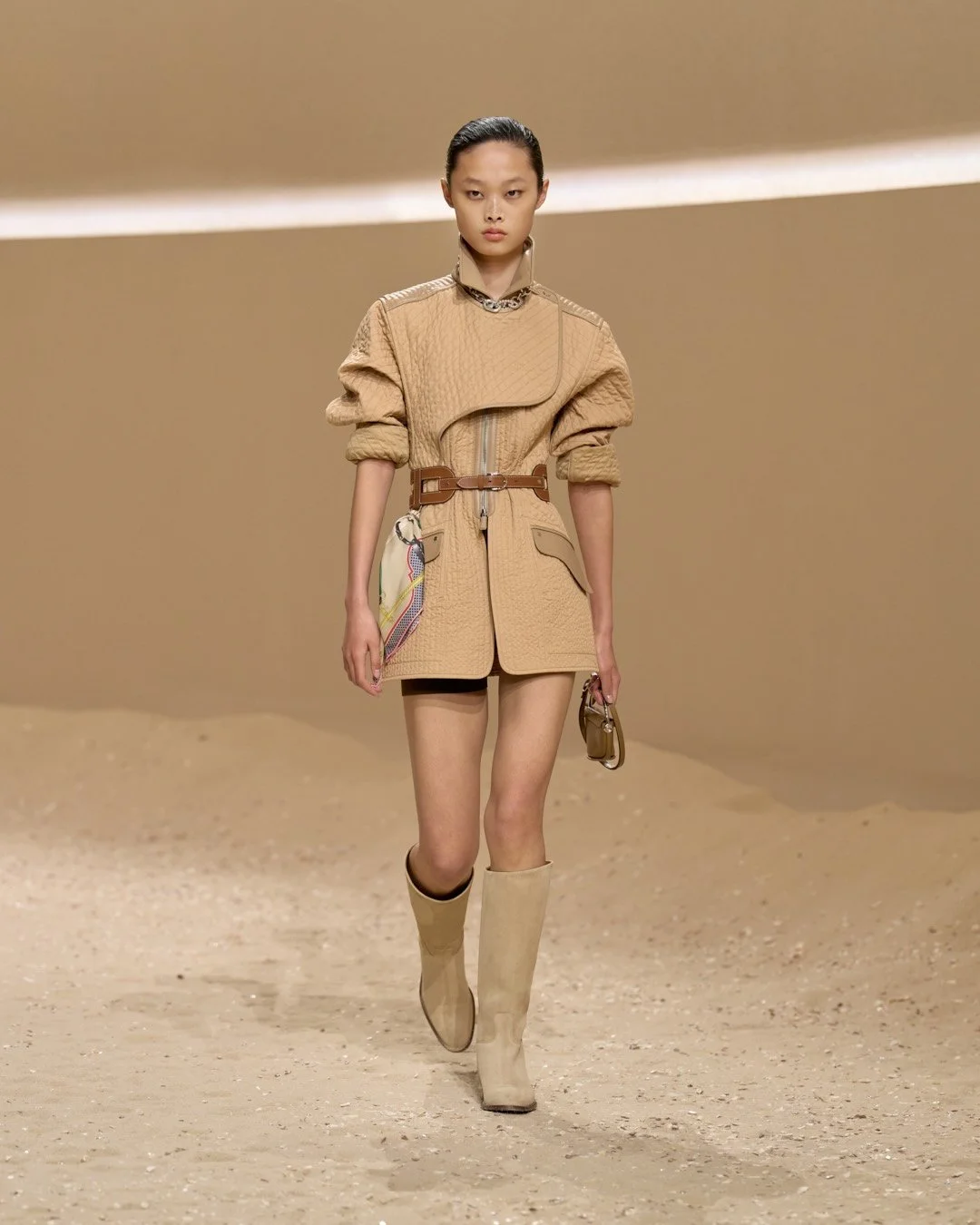
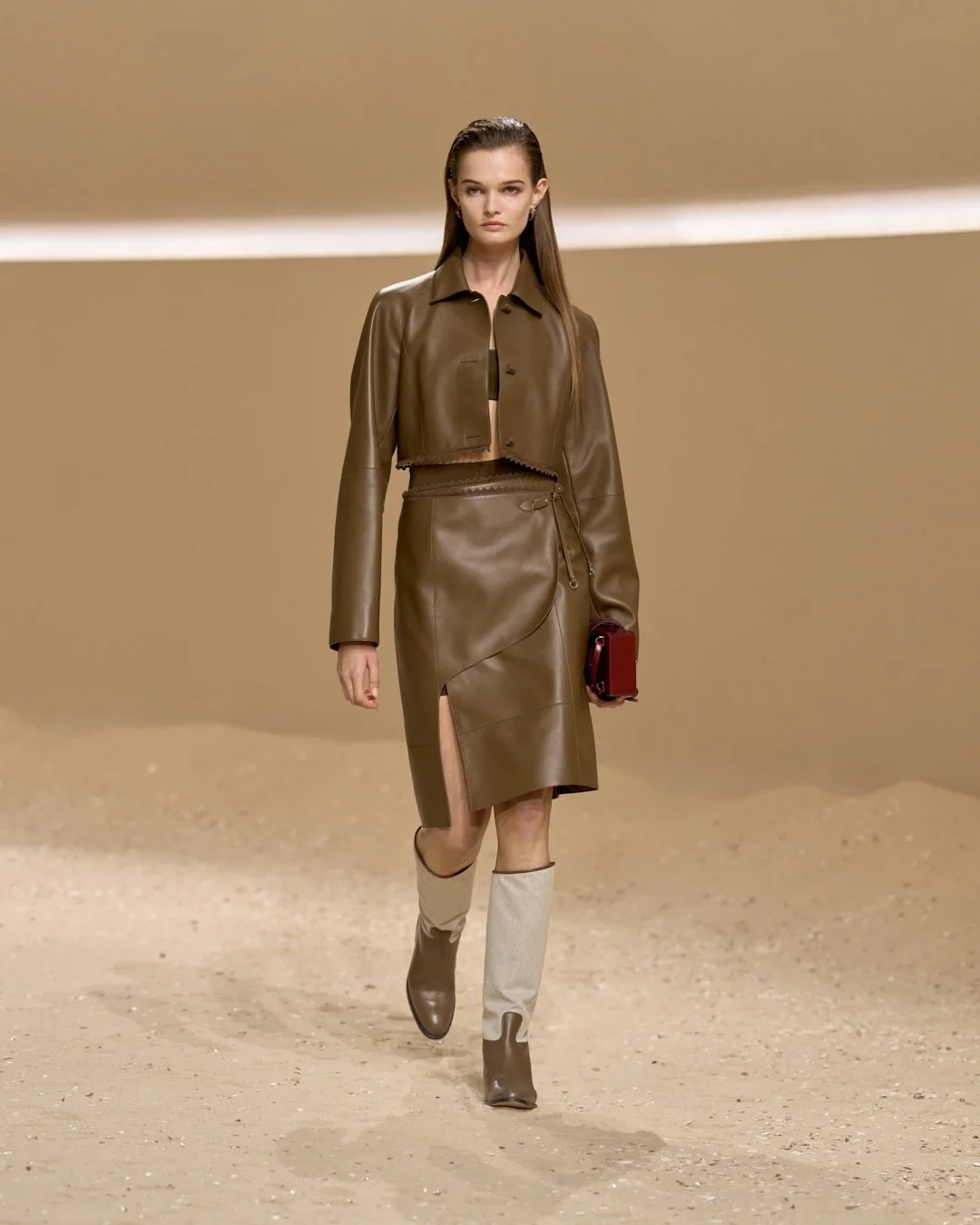
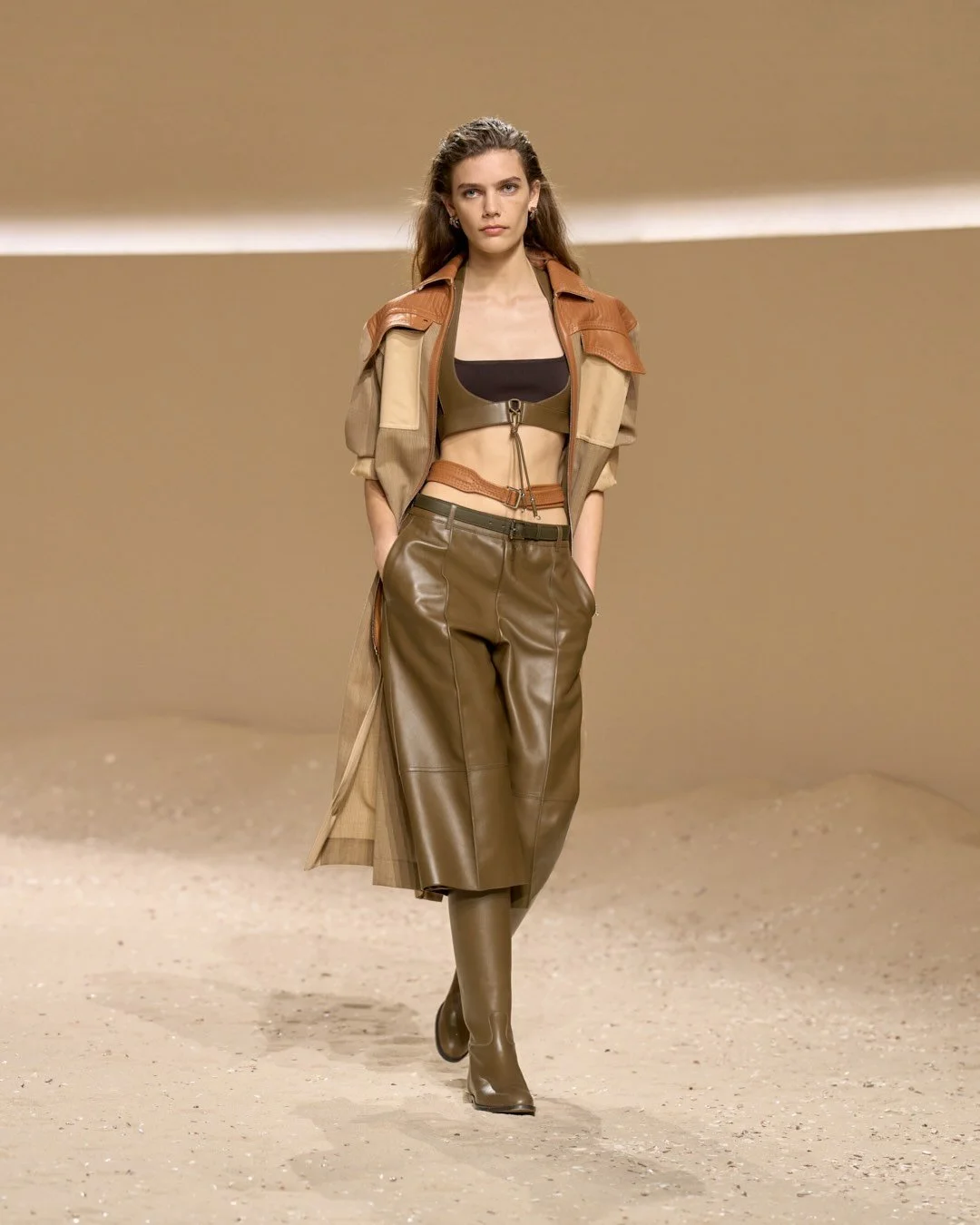
In a season where most fashion houses seem desperate to hold our gaze, Hermès reminds us that power can also lie in stillness. The Spring/Summer 2026 show didn’t chase spectacle. It lingered. It breathed. It offered us time to notice the small things — the way leather bends to light, the way silk holds shape before it moves.
What struck me first was the subtle tension of it all. There was an elegance that didn’t try too hard — clothes that spoke softly but carried immense authority. Nadège Vanhee-Cybulski understands that at Hermès, restraint isn’t about minimalism; it’s about precision. Every line, every stitch, felt like a decision made with intent.
Leather brassière tops, racer-back dresses, quilted silks — the collection felt grounded in movement. There’s always something sensual about Hermès when it’s done right: not overtly, but in the way fabric follows the body’s rhythm, not the other way around. And that’s what this show captured — a confidence that doesn’t perform, but just, exists.
The palette was quiet — sand, khaki, clay, the red of sun-warmed earth. These aren’t colors that demand attention, but they draw you in nonetheless. They have weight, patience, permanence. They remind you that depth doesn’t need saturation, and that beauty often lives in the restraint to stop before you’ve said too much.
Even the staging was restrained, though beautifully so — an environment of sand and broken shells, evoking the meeting point between nature and craft. Not as a backdrop, but as part of the narrative. Hermès doesn’t separate product from poetry. They are one and the same.
Some critics will say it played too safe — that the muted tones and controlled silhouettes lacked surprise. Maybe. But I think the surprise is precisely in that refusal to entertain. In a culture obsessed with immediacy, Hermès remains one of the few houses still designing for longevity.
In the end, the show felt less like a presentation and more like a meditation. On form. On discipline. On what it means to dress with awareness. These are clothes not made to provoke, but to endure. They don’t shout. They linger.
And perhaps that’s Hermès’ greatest strength: in a world constantly running forward, it still knows the value of standing perfectly still.
Creative Direction
Designed by Nadège Vanhee-Cybulski, the Hermès Spring/Summer 2026 collection continued her exploration of sensual restraint — a vision rooted in movement, form, and material honesty.
Color Palette
A study in understatement: shades of sand, khaki, clay, ivory, and muted red. The palette echoed the show’s staging — natural, sun-warmed, quietly powerful.
Materials & Craftsmanship
Signature leathers, quilted silks, and airy cottons were cut to emphasize flow and functionality. Brassière tops, structured skirts, and racer-back dresses reinterpreted Hermès’ equestrian codes through a modern lens.
Notes
Set Design
Minimalist yet evocative — a landscape of sand and broken shells designed to reflect the brand’s ongoing dialogue between earth, luxury, and control.
Tone & Mood
Poised, deliberate, and deeply human. Rather than spectacle, Hermès offered introspection: an invitation to observe rather than consume.
Why It Matters
In a season of excess, Hermès proves that quietness can still command attention. It’s a reminder that restraint — when done with intention — is not the absence of emotion, but the highest form of it.
Details
Published
7 October 2025
Visuals
Courtesy of Hermès
Balenciaga:
The Return to Form
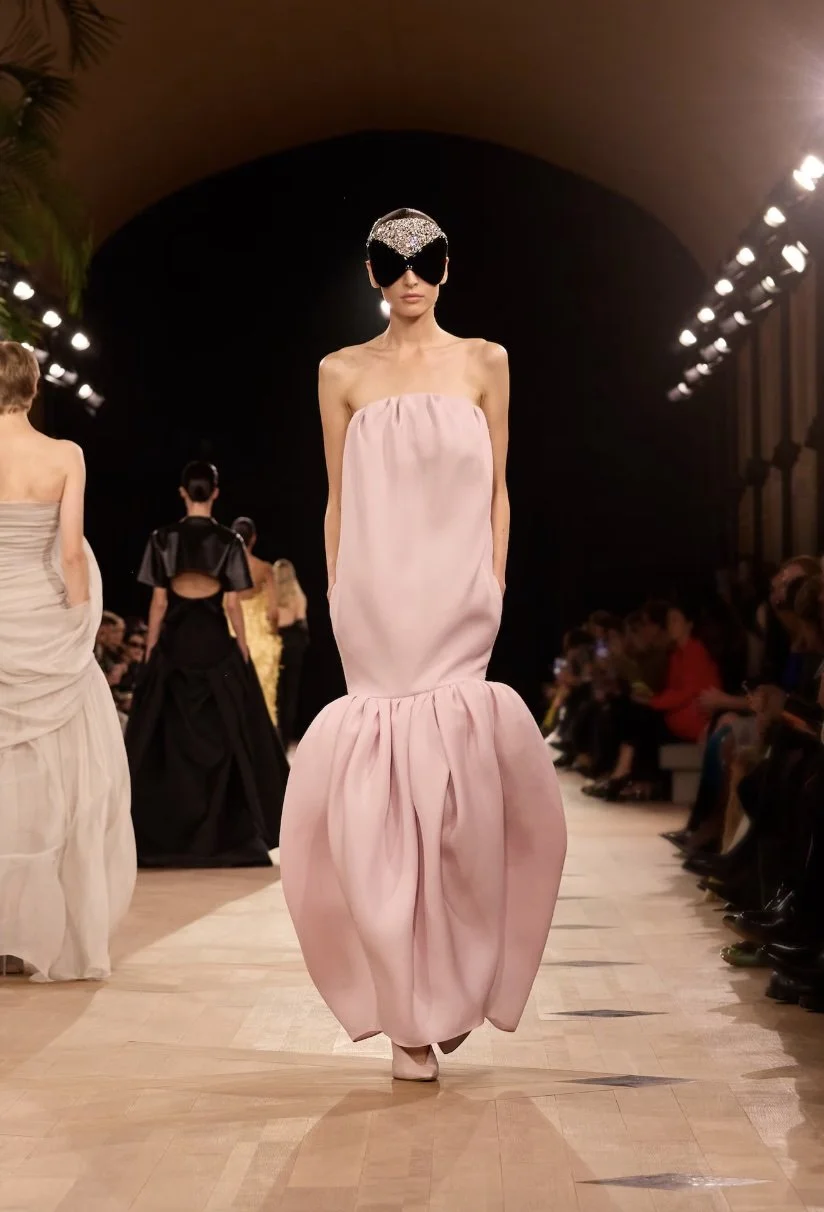
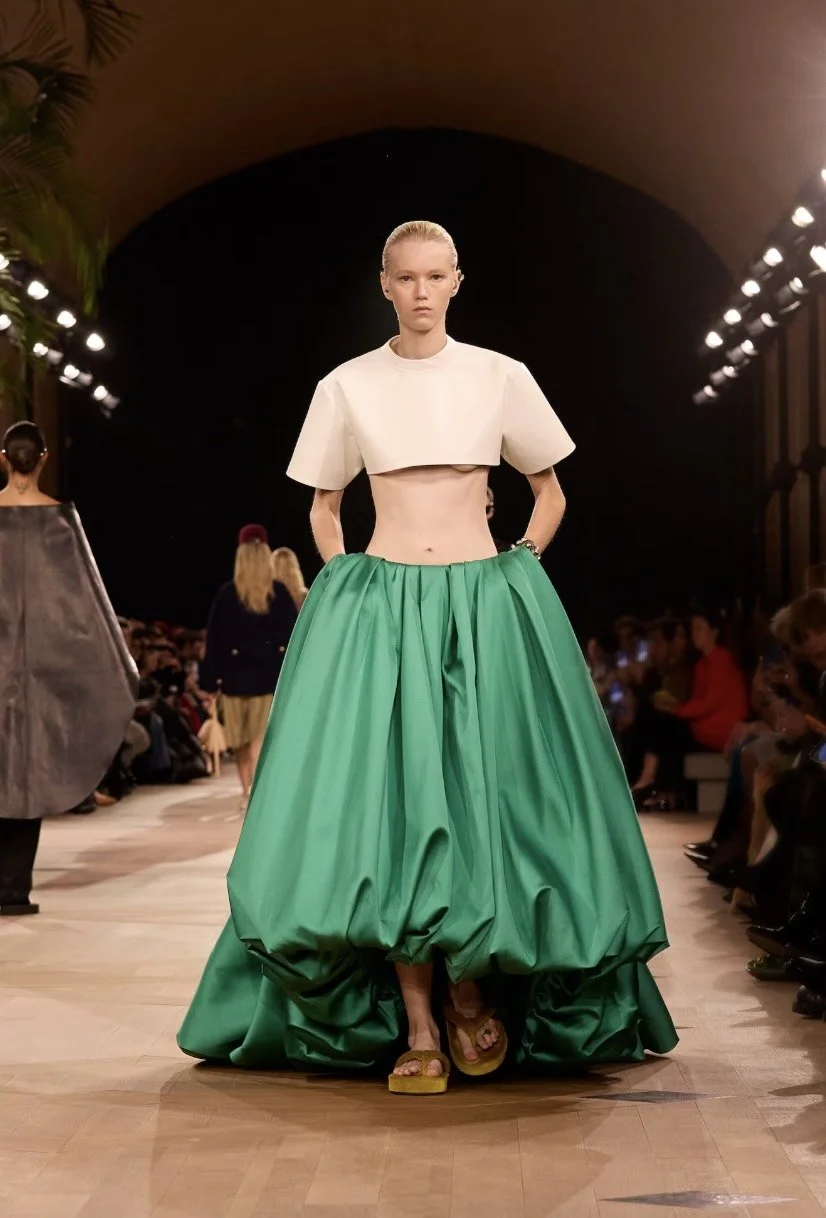
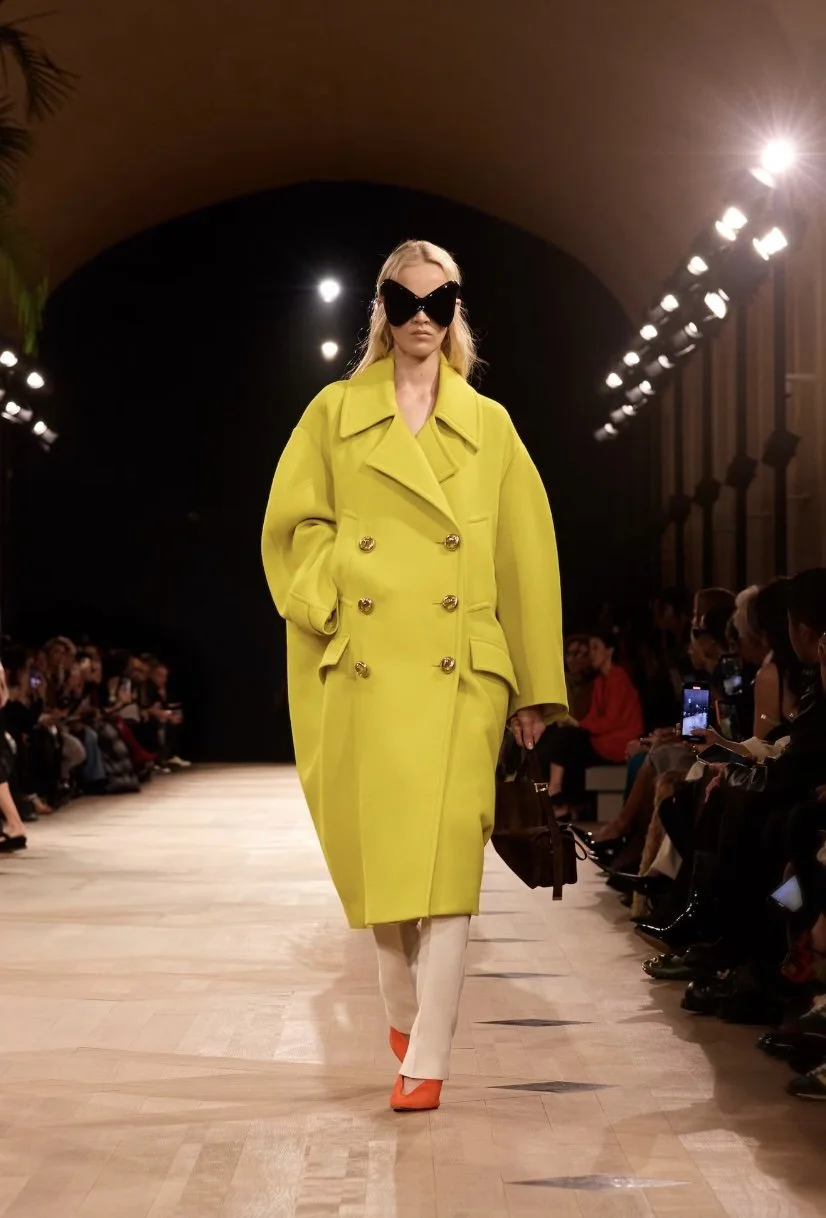
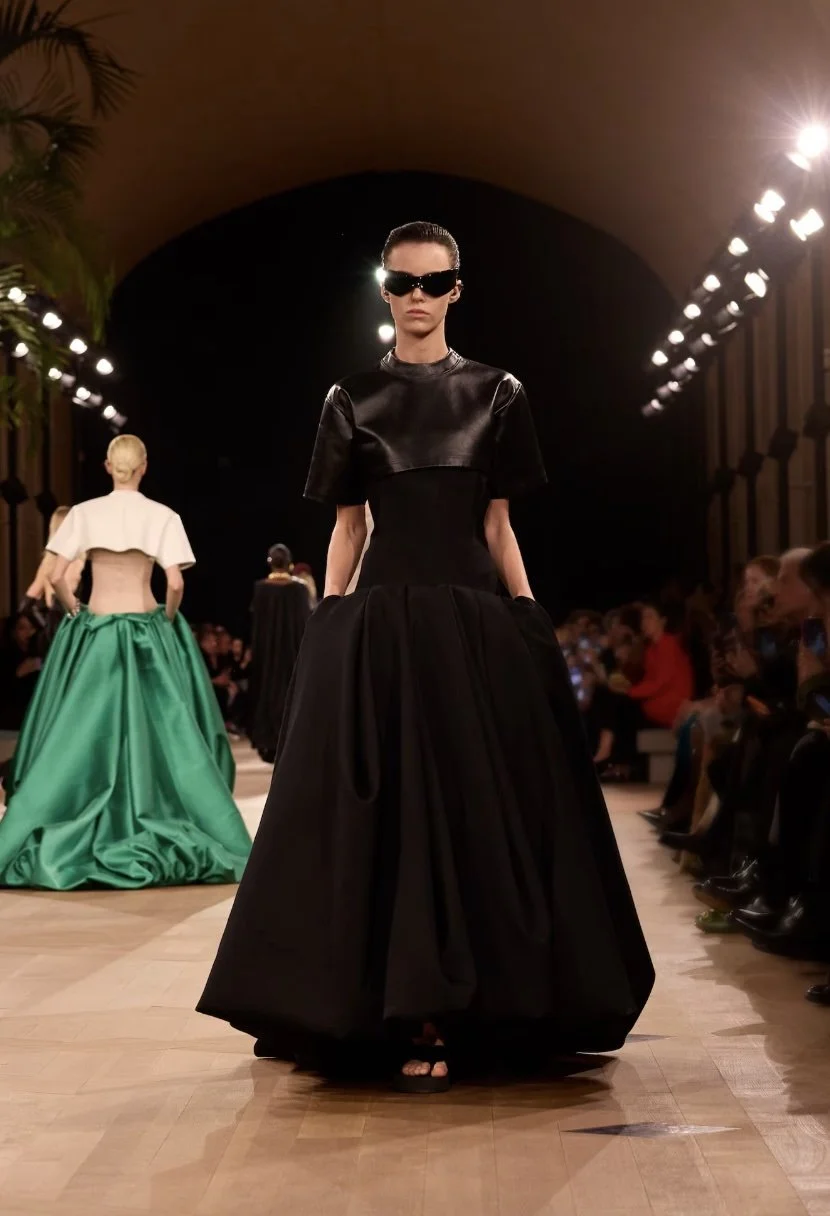
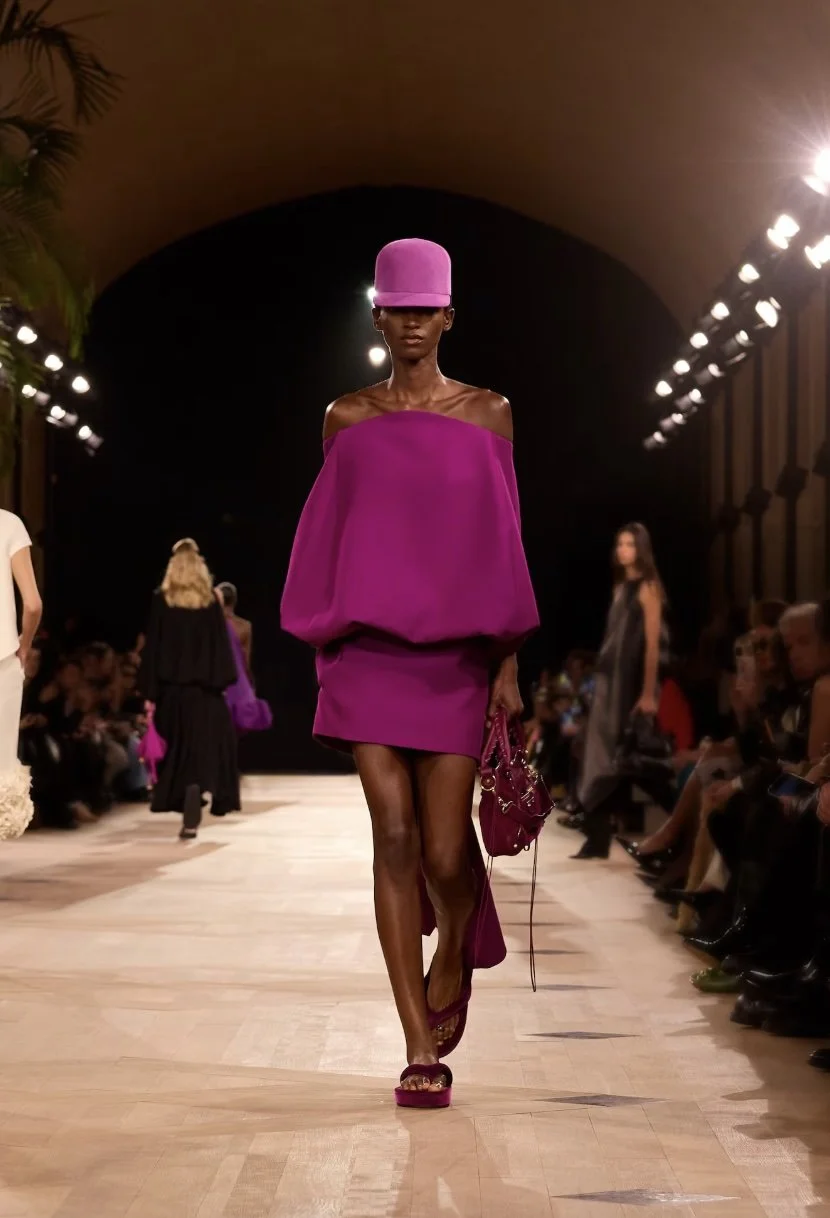



There’s a certain quiet that follows noise — the kind that feels like recalibration, like someone turned the volume down after years of distortion. That’s what Pierpaolo Piccioli’s debut at Balenciaga felt like. After a decade defined by exaggeration, irony, and spectacle, his first collection arrived with a kind of steadiness we didn’t know we were missing.
The show didn’t need to shout. It simply began — coats that curved like architecture, silhouettes that spoke in half-whispers. There were traces of Cristóbal everywhere: the cocoon shapes, the rounded shoulders, the purity of line that once made him the architect of couture. But Piccioli’s approach wasn’t nostalgic. It felt more like an act of remembering — not just what Balenciaga was, or who he was, but why it mattered.
The palette stayed neutral — stone, ink, soft cream — which only made the craftsmanship more visible. You could see how each seam was built, how the structure carried emotion instead of embellishment. The drama wasn’t gone; it had just been internalized.
In recent years, Balenciaga became the symbol of fashion’s self-awareness — irony turned into identity, excess as commentary. And maybe that was necessary; maybe that chaos was the only way the brand could survive in a hyper-digital world. But Piccioli’s debut seems to ask a different question: what if we’ve gone far enough? What if the next step isn’t forward, but inward?
This collection doesn’t erase Balenciaga’s edge — it reframes it. The sharpness is still there, only quieter, distilled. You can feel the confidence of someone who doesn’t need to provoke to be heard. And maybe that’s what the house needs right now — not another reinvention, but a return to its own language.
Because there’s something radical about restraint. Something deeply modern about a designer who looks at a century-old archive and finds relevance in its bones. In a world still addicted to spectacle, Piccioli’s Balenciaga feels almost subversive — not because it shocks, but because it doesn’t try to.
Perhaps that’s the lesson here: that evolution doesn’t always mean disruption. Sometimes, it means coming home — and finding that what you left behind was never really lost, just waiting to be seen again.
The Setting
Piccioli chose a restrained stage — minimalist, almost monastic — allowing focus to rest entirely on the clothes. The lighting softened every edge, echoing Cristóbal Balenciaga’s atelier photographs, where precision was always paired with silence.
The Silhouettes
A study in architecture and ease. The signature cocoon coats, sack dresses, and sculptural jackets were rendered in weightless fabrics, balancing formality with fluidity. Shoulders curved rather than squared; lines wrapped instead of cut. It was less about commanding space, more about inhabiting it.
The Palette
Neutrals dominated — ivory, graphite, and pale sand — punctuated by an occasional deep burgundy or navy. These weren’t fashion colors, but structural tones; each shade existed to highlight the silhouette and the workmanship.
Notes
The Philosophy
Balenciaga once said, “A couturier must be an architect for design, a sculptor for shape, a painter for color.” Piccioli’s collection feels like an answer to that statement. A return to design as discipline — to construction as poetry.
The Shift
After years of cultural commentary and provocation, this collection marks a quiet pivot. It’s not about spectacle or irony, but legacy. Piccioli doesn’t rewrite Balenciaga’s past; he restores its vocabulary, proving that clarity can be just as compelling as chaos.
The Takeaway
In a season crowded with noise, this was the rare show that demanded stillness. A reminder that true confidence doesn’t require volume — only vision.
Details
Published
7 October 2025
Visuals
Courtesy of Balenciaga
Bottega:
A New Kind of Quiet








After seasons of Matthieu Blazy’s sculptural precision and stealth-luxury perfection, Louise Trotter’s collection feels like an exhale, a loosening of the house’s famously taut silhouette. You could feel it in the room too — a collective recognition that something had shifted.
Trotter’s vision of Bottega is not about the armor of luxury, but its intimacy. The collection opened with the familiar — supple leather, intricate Intrecciato weaving — yet there was a softness in how it all moved. The tailoring, once rigid and sculpted, now hung with ease; the fabrics breathed; shirts unfurled. It’s about proportion as a feeling, not formula.
The color story mirrored this new tone: dusty clay, oxblood, faded olive, and a soft palette of Venetian blues. You could tell she’d spent time in the archives — there were echoes of the 1960s collections, but stripped of nostalgia. Even the iconic Intrecciato leather was reinterpreted — expanded, restructured, applied to ready-to-wear in subtle panels rather than just accessories. It didn’t feel like repetition though, more redefinition.
Trotter’s strength lies in how she humanizes luxury. Where Blazy’s Bottega was cerebral — a kind of intellectual exercise in construction — hers feels lived in. There’s tenderness here. The pajama shirting, the wrap skirts, the loafers that look like they’ve already been worn — all signal a shift from the unattainable to the intimately desirable.
Of course, with any new direction comes tension. There will be those who miss the theatricality, the sculptural armor that became Bottega’s post-Daniel Lee signature. But in a landscape oversaturated with “quiet luxury” and its imitators, Trotter’s debut didn’t feel like retreat. She’s not chasing minimalism; she’s chasing meaning instead.
And that might just be what the house — and the industry — needs.
Bottega Veneta has always been about craft, about the hands that make, not the mouths that talk. Trotter gets that. She’s not here to reinvent the wheel, but to remind us why it was worth making in the first place. Her collection isn’t loud or self-congratulatory. It’s measured, grounded, and beautifully considered.
The Setting
Presented in a minimalist space in Milan, the atmosphere reflected the shift Trotter wanted to make — serene, tactile, and grounded. The light washed over sand-colored floors, echoing the palette of the clothes and reinforcing her focus on materiality over spectacle.
The Silhouettes
Fluid tailoring replaced the structured precision of past seasons. Loose blazers, relaxed trousers, and wrap skirts moved with the body rather than around it. Even the signature Intrecciato appeared in ready-to-wear — woven panels in soft leather coats and tunics, signaling a quiet integration of house codes into daily life.
The Materials
Bottega’s language has always been craft, and Trotter’s debut reaffirmed that. Supple calfskin, washed cotton, linen blends, and paper-thin knits created a sense of ease. The pieces felt touched, softened — as if they’d already been lived in.
The Palette
A study in subtle warmth: oxblood, olive, clay, and Venetian blue formed the foundation, punctuated by neutral creams and stone. Every hue seemed borrowed from natural light and the Italian landscape — familiar, yet quietly sensual.
Notes
The Accessories
Bags and shoes retained their sculptural clarity but were scaled back in attitude. The Intrecciato weave appeared oversized in crossbody styles and softened in flat leather sandals. The statement came not from embellishment, but proportion.
The Philosophy
Trotter’s debut wasn’t about spectacle — it was about sincerity. By revisiting Bottega’s craft heritage through a more human lens, she shifted the brand from being admired to being understood. It’s luxury that invites touch, not distance.
The Shift
Where Blazy’s Bottega prized construction and control, Trotter’s finds strength in looseness — a recalibration toward wearability, movement, and emotional connection. It’s not a revolution, but a refinement.
The Takeaway
Trotter’s first collection doesn’t chase trends or noise. It trusts that beauty, when built on craft and care, doesn’t need to announce itself. Bottega’s new quiet isn’t absence — it’s confidence.
Details
Published
7 October 2025
Visuals
Courtesy of Bottega